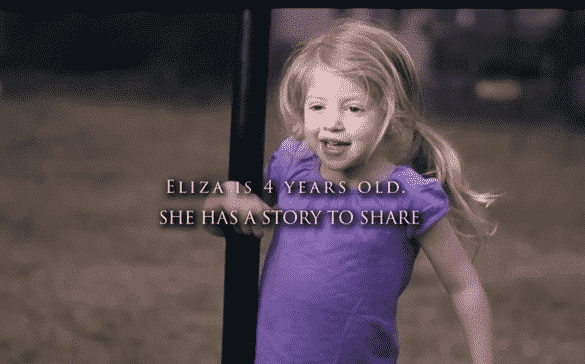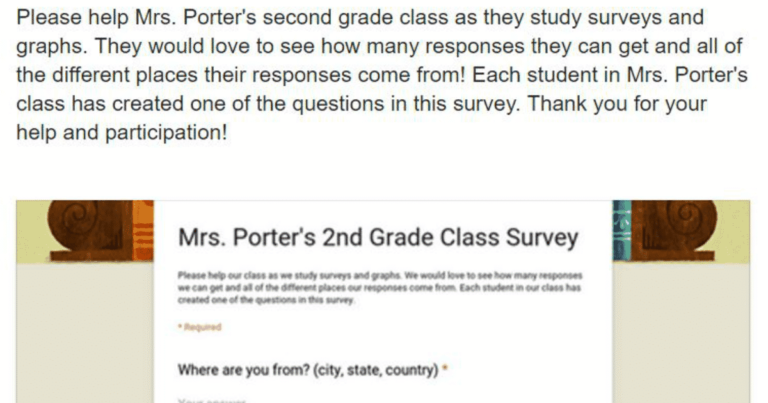Imagine Relying On A Video Going Viral To Save Your Child’s Life
No one knows exactly what it takes to make a video go viral; if they did, there would be no average posts, no unread bits of genius, no amazing jokes flying under the radar. Working in the digital world, we often try to put our finger on exactly what it is that makes people connect to a story so much that they share it with their friends, and those friends share it with their friends, and those friends share it with their friends — until soon everyone you know is talking about a honey badger or the rent being too damn high. I think about it because I like pageview bonuses and the idea that masses of people are reading something I wrote. But I can’t imagine what it would be like to have the life of my child riding on my ability to create content that people would share.
That’s basically what is happening to the parents of Eliza O’Neill. The South Carolina family has been trying for over a year to raise the money to save their four-year-old daughter’s life. Eliza was diagnosed last July with Sanfilippo Syndrome, and her body and mind will begin deteriorating in months without a cure. Her family is trying to raise more than two million dollars to fund a clinical trial for the cure. The O’Neills are lucky — the have friends, contacts and resources to make their dream a reality. They have already raised 1.1 million. But they have 700,000 more to go.
Being in the business of trying to get clicks on the Internet (which anyone who writes for the Internet is, make no mistake), there are often talks about what it takes to make a video go “viral.” Clearly there must be a formula, or sites like Buzzfeed and Upworthy would not be the media powerhouses they are. I believe there is a formula, I’m just not exactly sure what it is. In my three years writing online, I have only written one viral post that had several million views. It was about cakes shaped like vaginas. I’d like to think it was because I told some good jokes, but in actuality it probably gained traction because people don’t often get to pull up pictures of vaginas at work and have a collective laugh.
Pretty much everyone in the online publishing industry has at one time or another thought they had the makings of a viral post — only to have it fall short of their expectations. Can you imagine what it would be like to be a parent counting on the kindness of the internet to save your daughter’s life? I can’t. Which is why I’m writing about Eliza again.
I first wrote about her story six months ago, when I caught wind of the video the parents had made. They were trying desperately to make it go viral, and they probably thought they had a chance. They were production novices, did a quick Google search of “how to make a viral video” and connected with filmmakers DL Cade and Benjamin Von Wong who immediately signed on to produce the film for the family.
It’s been over six months and the video has tallied almost 400,000 views. That may seem fantastic, but in the world of viral content — it’s nothing. You may be thinking, there are tons of kids in the world who need this type of help — why bother sharing this video? And you would be right, there are. But no one ever asks those questions before they share a Grumpy Cat meme.
For the record, the funds from the Saving Eliza campaign go directly to the 501c3 non-profit that her parents have set up called the Cure Sanfilippo Foundation. From a quote from her father Glenn, “Every bit goes to stopping this disease period, for all kids. We have no idea if Eliza will qualify or be selected.”
Now the family is dissecting the success of the ALS Ice Bucket Challenge to see if there is a way to draw some attention to their fundraising efforts with a similar model — theirs asks you to #Sing2Lines for #SavingEliza. Because Eliza loves music, the campaign simply asks everyone to record themselves singing two lines of a song and donate here.
I checked the analytics for the first post I wrote about Eliza, six months ago. It performed average. When I sit in our weekly meeting next Monday, I’ll have to explain what I think about why this post did or didn’t succeed. We’ll analyze the content, my headline, the SEO I chose — in an attempt to figure out what I can do better next time. Whatever our conclusions are, I’ll shrug it off, because thinking about these things for every, single post I write is really tiring. I have the luxury of that. The success of this post isn’t a ticking time bomb attached to my own child’s life.
I wish I knew the formula, O’Neill family — I really do.
[youtube=https://www.youtube.com/watch?v=G0IY8qG7J-I]







